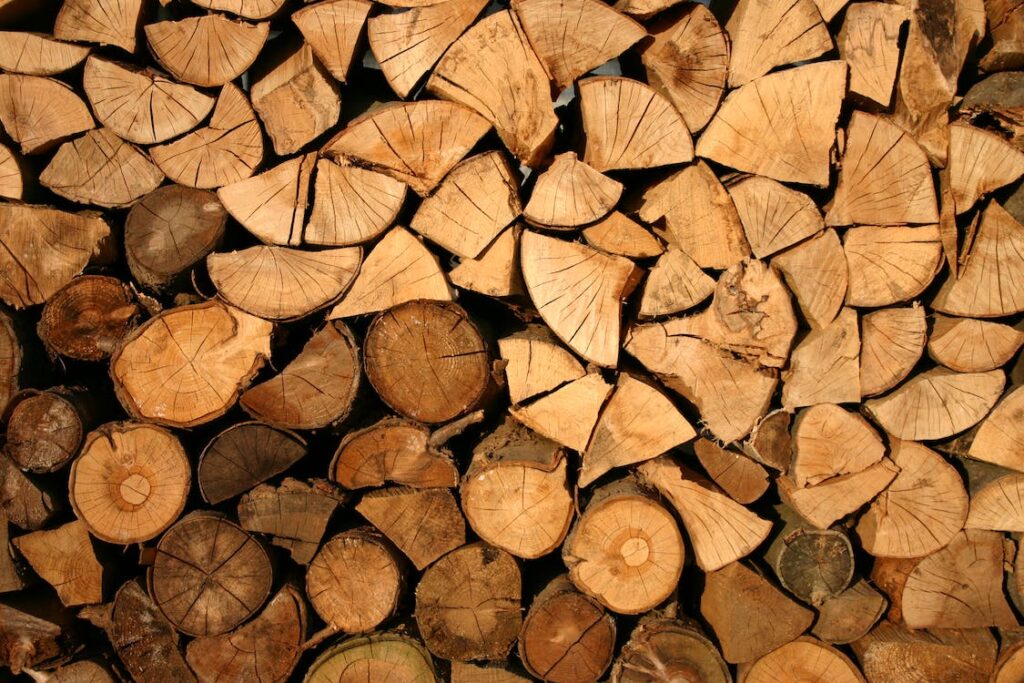As the world grapples with the challenges of urbanisation and sustainability, an exciting and innovative trend is emerging in the field of modern construction: tall timber buildings. Traditional materials like concrete and steel have long dominated the construction industry, but there is a growing movement to harness the potential of wood in building taller and more sustainable structures. Tall timber buildings, often constructed with materials like cross-laminated timber (CLT) and glue-laminated timber (glulam), are gaining momentum globally. In this blog, we will explore the rise of tall timber buildings, their advantages, sustainability factors, and some notable examples that showcase the incredible potential of wood in modern construction.

The Rise of Tall Timber Buildings
For centuries, wood has been a primary building material, but as construction technology advanced, materials like concrete and steel became more prominent, particularly in tall and urban construction. However, with concerns about the environmental impact of these materials, there has been a resurgence of interest in timber as a sustainable and aesthetically pleasing alternative. The development of engineered wood products, such as CLT and glulam, has played a significant role in the reemergence of tall timber buildings.
Cross-Laminated Timber (CLT): At the heart of the tall timber building revolution is the ingenious engineering of Cross-Laminated Timber, or CLT for short. CLT stands as a testament to human innovation and our ability to harness the remarkable properties of wood in the modern construction industry. This engineered wood product is a result of intricate craftsmanship, where layers of lumber boards, typically of spruce, pine, or fir, are meticulously arranged and bonded together with advanced adhesives. What sets CLT apart is its crosswise layering, where each successive layer is laid at right angles to the previous one. This meticulous arrangement imparts exceptional strength to the material, effectively turning it into a versatile and robust building component. The crosswise layering not only enhances the structural integrity of CLT but also provides it with unique load-bearing capabilities, making it an ideal choice for use in tall buildings as both load-bearing walls and floors.
This innovative approach to timber engineering represents a significant departure from conventional construction materials, such as concrete and steel. CLT’s strength and versatility are particularly remarkable, allowing architects and engineers to push the boundaries of what is possible in building design. The ability of CLT to span long distances without the need for intermediate supports is a game-changer, providing architects with the creative freedom to design open, light-filled spaces that were once difficult to achieve. Moreover, the sustainability factor of CLT is a driving force behind its adoption in modern construction. Wood, being a renewable resource, makes CLT a responsible choice that contributes to reducing the carbon footprint of tall buildings, marking a significant stride towards greener and more sustainable construction practices.
In essence, CLT is not just a building material; it’s a symbol of human ingenuity, a celebration of sustainability, and a cornerstone of the tall timber building movement. Its exceptional strength and load-bearing capacity, combined with its environmentally friendly attributes, are transforming the way we think about and construct buildings in the 21st century. As we continue to explore the myriad benefits of CLT, it becomes evident that it holds the potential to shape the future of architecture and construction, creating a more sustainable and aesthetically pleasing built environment.
Glue-Laminated Timber (Glulam): Glulam is another engineered wood product where multiple layers of timber are bonded together with adhesive. This results in beams and columns with excellent strength and flexibility.
Advantages of Tall Timber Buildings
The increasing popularity of tall timber buildings is due to several compelling advantages:
Sustainability: One of the most compelling reasons for embracing tall timber buildings is their significant contribution to sustainability. At the heart of this sustainability lies wood, a renewable resource that holds a remarkable secret: the ability to sequester carbon. In an era where climate change is a pressing concern, the choice of building materials is not just about structural integrity but also about environmental responsibility.
Wood, being a renewable resource, comes from well-managed forests where trees are harvested and replaced, ensuring a continuous cycle of growth and regeneration. The use of timber in construction, especially in tall timber buildings, is a pivotal step towards reducing the carbon footprint of the built environment. As trees grow, they absorb carbon dioxide from the atmosphere, and this stored carbon is retained within the wood even after it’s harvested for construction. This carbon lock-in effect means that timber in buildings acts as a carbon reservoir, effectively keeping carbon dioxide out of the atmosphere for the lifespan of the building. In essence, tall timber buildings become not just structures but vital components of a carbon mitigation strategy.
The carbon storage capability of tall timber buildings has a two-fold impact on sustainability. First, it reduces the carbon emissions associated with the production of concrete and steel, materials known for their substantial carbon footprint. Second, it contributes to creating a more sustainable built environment by offsetting the emissions generated during construction and operation. In a world where the construction industry accounts for a significant portion of global carbon emissions, tall timber buildings serve as beacons of hope, demonstrating that innovative design and responsible material choices can lead us toward a more sustainable future.
This approach aligns perfectly with the principles of green building and sustainable design, which prioritise environmental responsibility and low-impact construction practices. By opting for tall timber buildings, we not only address immediate concerns about reducing carbon emissions but also acknowledge the broader imperative of protecting our planet and mitigating the effects of climate change. It’s a powerful testament to how the construction industry can be a part of the solution in creating a more sustainable, resilient, and environmentally conscious world. In the chapters that follow, we’ll delve further into the various facets of sustainability that tall timber buildings encompass, demonstrating their potential to revolutionise the way we approach construction and promote a greener, more responsible future.
Aesthetics: Timber imparts warmth, beauty, and a natural feel to structures. The exposed wood elements in tall timber buildings create visually appealing spaces, which is a crucial aspect of modern architectural design.
Speed of Construction: Timber is relatively lightweight and can be prefabricated off-site, speeding up construction. This can significantly reduce the overall project timeline.
Reduced Environmental Impact: Timber construction generates less waste, minimises the need for heavy machinery, and has a lower overall environmental impact.
Seismic Resilience: Timber’s inherent flexibility and ductility make it an excellent choice for earthquake-prone regions. Tall timber buildings can be designed to withstand seismic forces effectively.
Energy Efficiency: Timber provides natural insulation, which can enhance a building’s energy efficiency. Timber buildings often have superior thermal performance.

Notable Examples of Tall Timber Buildings
Mjøstårnet, Norway: Mjøstårnet is an iconic example of a tall timber building, standing at 85.4 metres (280 feet). This mixed-use building includes apartments, a hotel, offices, and a swimming pool. It showcases the potential of CLT and glulam in tall construction.
T3, Minneapolis, USA: T3 (Timber, Technology, and Transportation) is an innovative seven-story commercial building in Minneapolis, USA. It’s a groundbreaking example of mass timber construction, emphasising sustainability and aesthetics.
HoHo, Austria: HoHo Vienna, a 24-story building in Austria, is one of the tallest timber structures in the world. It is a residential and commercial building that serves as a testament to the feasibility and safety of tall timber construction.
Sustainability Factors
Tall timber buildings align with the principles of sustainability in several key ways:
Carbon Sequestration: Timber stores carbon throughout its life cycle, helping mitigate the carbon footprint of the building.
Reduced Energy Consumption: Timber’s natural insulating properties reduce heating and cooling energy requirements, enhancing energy efficiency.
Reduced Environmental Impact: Timber construction generates less construction waste, which is environmentally friendly.
Renewability: Wood is a renewable resource that can be responsibly harvested and replanted.
Biodiversity: Well-managed forests that supply timber can also support biodiversity and wildlife habitat.
Challenges and Considerations
While the benefits of tall timber buildings are substantial, there are challenges and considerations to address:
Fire Safety: Timber is flammable, so ensuring adequate fire protection and prevention measures is essential.
Moisture and Decay: Timber is susceptible to rot and decay in moist environments, so proper maintenance and protection are crucial.
Regulatory Barriers: Building codes and regulations may need to be adapted to accommodate tall timber construction fully.
Cost: Tall timber construction can be more expensive than traditional methods due to the novelty of the approach and the cost of engineered wood products.
Tall timber buildings are redefining the possibilities of modern construction. With their sustainability benefits, aesthetic appeal, and proven structural performance, these structures are gaining recognition and acceptance worldwide. As urbanisation and environmental concerns continue to shape the construction industry, tall timber buildings offer a sustainable and visually striking alternative to traditional materials. They embody the principles of green building and provide a glimpse into a future where wood plays a more prominent role in the construction of our cities. As technology and expertise in tall timber construction continue to grow, the skyline of the future may be dominated by structures that are not only environmentally friendly but also stunning examples of architectural innovation.
A good construction software makes use of good project management functionality, estimate and financial/accounting tool functionality, job management, scheduling and planning and support functionalities and more. WunderBuild is a construction management software that aims to provide all of these functionalities and more to bring out the best outcomes for a project. Enquire here today, to learn more about Wunderbuild and start your free trial.




